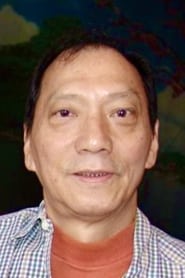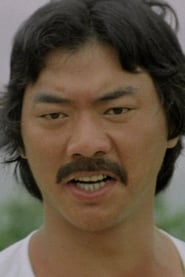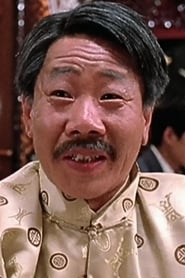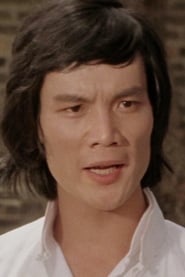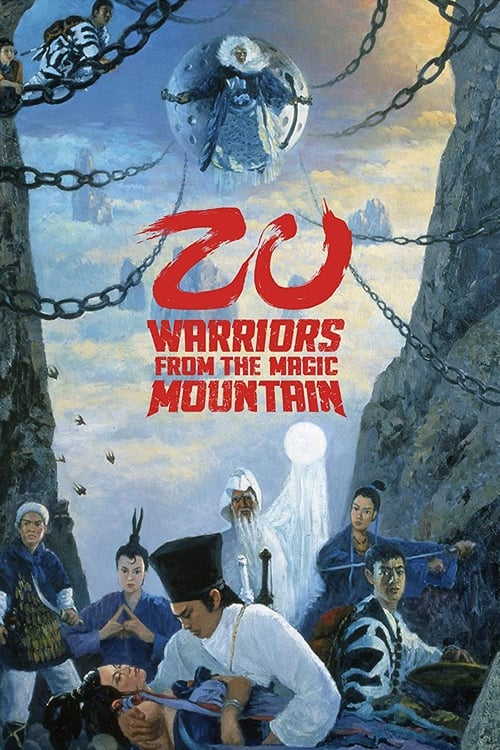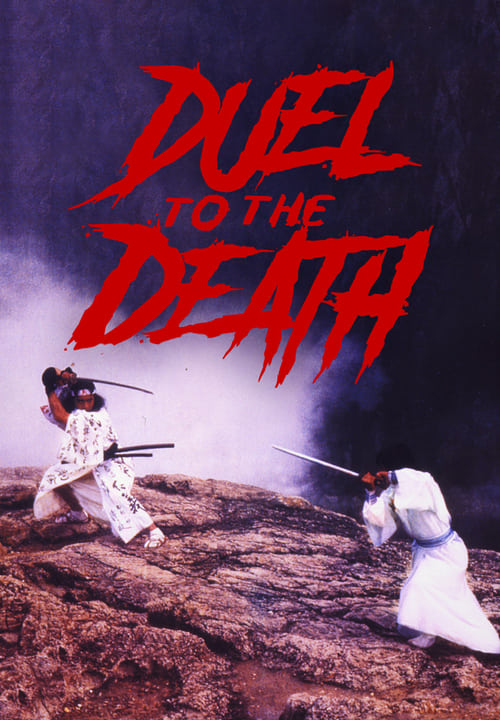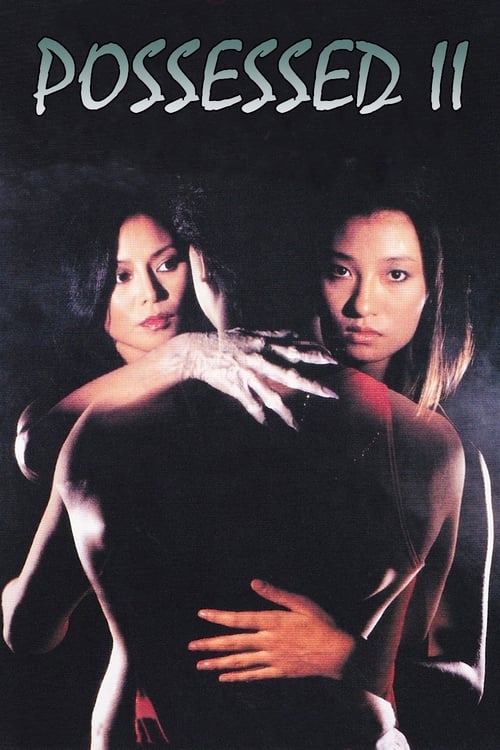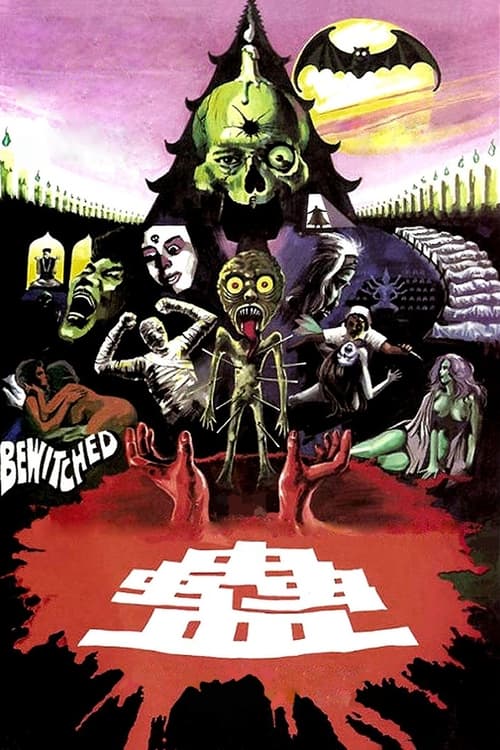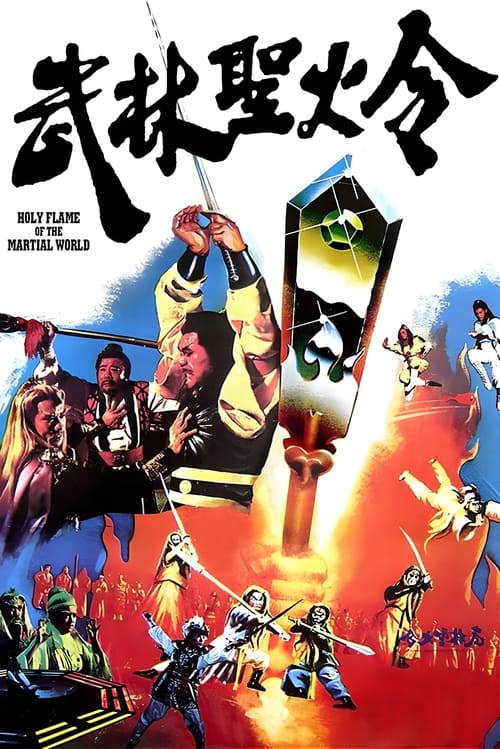
Ask Your Own Question
What is the plot?
In the year 1663, under the strict and unforgiving rule of the Qing Dynasty, a harsh law forbids any marriage between the ruling Manchu people and the Han Chinese. Kao Hsiung, a respected and high-ranking Manchu soldier, chief instructor of the eight-banner army, secretly defies this law by marrying a Han woman. His defiance, however, is discovered by imperial authorities, and the Emperor decrees a cruel punishment: Kao must kill his own wife to demonstrate loyalty. Kao refuses, his heart torn between duty and love. In a harrowing and brutal scene within the imposing walls of the Imperial Palace, imperial soldiers execute Kao's wife before his eyes, her life extinguished in cold blood as Kao stands powerless, grief-stricken and enraged.
This moment sets the tone for the film's surreal and tragic narrative. Kao, now marked for death, fights fiercely against the palace guards. Among his enemies is the sinister Sorcerer Bat, the Emperor's dark sorcerer and enforcer, whose malevolent magic and ruthless ambitions make him a formidable foe. Kao's desperate escape turns chaotic when he seizes the infant Crown Prince as a hostage, hoping to bargain his way to safety. But tragedy strikes again: in the frantic flight through shadowed corridors and dense woods, Kao accidentally suffocates the prince. The infant's life slips away silently, a heavy burden that will haunt Kao forever.
Lost and broken, Kao stumbles upon a baby lying beneath a tree in the forest. In a moment of grim necessity and hope, he adopts this child, naming him Shu-kan, meaning "Tree Root." To conceal the prince's death and protect the boy, Kao places the royal jade medallion--the prince's symbol of identity--around Shu-kan's neck. This act of deception lays the foundation for the film's complex web of mistaken identities and political intrigue.
Over a decade later, the story shifts to 1677. Shu-kan grows into a young man unaware of his true origins but burdened by the weight of the jade medallion he wears. Sorcerer Bat, ever watchful and scheming, mistakes Shu-kan for the real Crown Prince, seeing in him a pawn to seize control of the throne. Meanwhile, Kao Hsiung has fallen into despair and alcoholism, living as a drunken wreck in a hidden refuge. His blindness, inflicted by poison powder from an assassin sent by Sorcerer Bat, renders him vulnerable and desperate.
Shu-kan, devoted to his adoptive father, seeks a cure for Kao's blindness. His quest leads him to two elderly Taoist priests, Kei-moon and Tun-kap, disciples of the same master but constantly at odds with one another. Their quarrels provide a sharp contrast to the film's darker themes, injecting humor and lightness into the narrative. Despite their bickering, these priests are powerful martial artists and magicians, masters of Taoist magic and combat. They reluctantly agree to train and protect Shu-kan, recognizing his importance in the unfolding struggle.
The dynamic between Kei-moon and Tun-kap is vividly portrayed: their constant jabs and rivalry mask a deep respect and shared history. They teach Shu-kan a blend of martial arts and supernatural magic, including the use of enchanted paper swords and the summoning of bizarre creatures trapped in jars--strange allies that will prove crucial in the battles ahead.
Sorcerer Bat relentlessly pursues Shu-kan and Kao Hsiung. In a brutal assault on Kao's hideout, Bat's forces overwhelm the drunken soldier. Kao, despite his blindness, fights valiantly but is ultimately killed by Sorcerer Bat, his death a poignant and tragic moment that underscores the cost of rebellion and loyalty. Before dying, Kao's last moments are filled with sorrow and regret, knowing the truth of the prince's death remains hidden but fearing for Shu-kan's safety.
Captured by Sorcerer Bat, Shu-kan is forcibly tattooed on the foot with the royal insignia, a cruel mark intended to legitimize Bat's plan to control the throne through him. However, Shu-kan's spirit remains unbroken. Using his newly acquired magical skills and aided by the strange monster creature he befriends--an eerie but loyal entity living in a jar--Shu-kan escapes the sorcerer's clutches in a dazzling sequence of surreal martial arts and supernatural feats.
The film builds to a climactic confrontation within the shadowed halls of Sorcerer Bat's lair. Shu-kan, now fully trained and empowered, joins forces with Kei-moon and Tun-kap. Their combined mastery of martial arts and Taoist magic creates a spectacle of inventive combat, blending physical prowess with spells, enchanted weapons, and summoned creatures. The battle is fierce and chaotic, with each side unleashing their full power. Sorcerer Bat's dark magic is formidable, but the unity and courage of Shu-kan and the Taoist priests prove stronger.
In the final moments, Sorcerer Bat is defeated, his ambitions crushed. The throne is saved from his sinister grasp, and the deception surrounding Shu-kan's identity is laid bare. Shu-kan survives, no longer a pawn but a hero shaped by loss, magic, and perseverance. The film closes on a lighter note, with Kei-moon and Tun-kap resuming their endless quarrels, their comedic banter a reminder of the enduring human spirit amid chaos.
Thus ends The Miracle Fighters, a surreal martial arts fantasy that weaves tragedy, magic, and humor into a wild, visually stunning tale of loyalty, identity, and the fight against tyranny.
More Movies Like This
Browse All Movies →What is the ending?
In the ending of "The Miracle Fighters," the main characters, including the protagonist and his allies, confront the evil sorcerer in a climactic battle. They utilize their unique powers and skills to defeat him, ultimately restoring peace. The protagonist finds a sense of purpose and belonging, while the other characters also find resolution in their arcs.
As the final act unfolds, the scene is set in a dark, ominous lair where the evil sorcerer, a figure cloaked in shadows, prepares to unleash his final attack. The air is thick with tension, and the flickering torches cast eerie shadows on the stone walls. The protagonist, a young man with a strong sense of justice, stands at the forefront, flanked by his allies, each displaying their unique abilities. The stakes are high, and the atmosphere is charged with anticipation.
The battle begins with the sorcerer launching a barrage of dark energy towards the heroes. The protagonist, fueled by determination and a desire to protect his friends, dodges the blasts with agility. His heart races as he recalls the struggles they have faced together, the bonds they have forged, and the sacrifices made along the way. He knows that this moment is not just about defeating the sorcerer; it is about standing up for what is right.
As the fight intensifies, the allies coordinate their powers. One character, a skilled martial artist, uses his agility to distract the sorcerer, while another, a master of elemental magic, conjures flames to counter the dark energy. The protagonist seizes the opportunity, channeling his own inner strength and the lessons learned from his journey. He unleashes a powerful attack, a culmination of his growth and newfound confidence.
The sorcerer, realizing he is outmatched, attempts to retreat into the shadows, but the protagonist and his allies press on. They combine their powers in a final, desperate move, creating a brilliant explosion of light that engulfs the lair. The sorcerer is overwhelmed, his dark magic dissipating as he is defeated. The scene is visually stunning, with colors swirling and light illuminating the darkness, symbolizing the triumph of good over evil.
In the aftermath, the lair crumbles around them, but the heroes emerge victorious. They stand together, breathing heavily, their faces reflecting a mix of relief and triumph. The protagonist looks at his friends, realizing that they have not only defeated a great evil but have also found a family in each other. Each character experiences a moment of reflection, acknowledging their growth and the bonds they have formed.
As they leave the ruins of the lair, the sun rises on the horizon, casting a warm glow over the landscape. The protagonist feels a sense of belonging and purpose, knowing that he has played a crucial role in this victory. His allies, too, find closure in their arcs; the martial artist embraces his newfound confidence, while the elemental mage understands the importance of teamwork and friendship.
In the final scene, the group walks together, united and hopeful for the future. They share laughter and camaraderie, a stark contrast to the darkness they faced. The camera pans out, capturing the beauty of the world around them, now free from the sorcerer's tyranny. The film concludes with a sense of hope and renewal, emphasizing the themes of friendship, courage, and the power of unity in overcoming adversity.
Is there a post-credit scene?
The movie "The Miracle Fighters," produced in 1982, does not have a post-credit scene. The film concludes its narrative without any additional scenes or content after the credits roll. The story wraps up with the resolution of the main conflict, focusing on the characters' journeys and the culmination of their battles against evil forces. The ending emphasizes the themes of friendship, courage, and the triumph of good over evil, leaving the audience with a sense of closure.
Who are the main characters in The Miracle Fighters and what are their roles?
The main characters in The Miracle Fighters are the two protagonists, played by the martial arts stars, who are known for their unique abilities and comedic interactions. One character is a skilled fighter with a strong sense of justice, while the other is more of a trickster, often using humor to navigate challenges. Their dynamic drives much of the film's plot.
What specific powers do the characters possess in The Miracle Fighters?
In The Miracle Fighters, the characters possess various supernatural abilities, including the power to manipulate elements, perform incredible martial arts moves, and utilize magical spells. These powers are visually represented through vibrant special effects, showcasing their unique fighting styles and the fantastical nature of their abilities.
What is the significance of the 'Miracle Fighters' title in relation to the characters' journey?
The title 'Miracle Fighters' signifies the characters' transformation from ordinary individuals into extraordinary heroes. Throughout the film, they face numerous challenges that test their skills and resolve, ultimately leading them to embrace their powers and fight against evil forces, embodying the idea of miracles through their actions.
How do the characters' relationships evolve throughout The Miracle Fighters?
The relationships between the characters in The Miracle Fighters evolve significantly as they face various trials together. Initially, there is tension and rivalry, but as they confront common enemies and support each other, they develop a strong bond of friendship and camaraderie, which is crucial for their success in overcoming obstacles.
What are some key battles or confrontations in The Miracle Fighters that highlight the characters' abilities?
Key battles in The Miracle Fighters include intense confrontations with powerful adversaries that showcase the characters' martial arts skills and magical abilities. These scenes are filled with dynamic choreography, special effects, and emotional stakes, illustrating the characters' growth and the importance of teamwork in their fight against evil.
Is this family friendly?
"The Miracle Fighters," produced in 1982, is a Hong Kong fantasy action-comedy film that features a blend of martial arts, supernatural elements, and humor. While it has a whimsical and adventurous tone, there are several aspects that may be considered objectionable or upsetting for children or sensitive viewers:
-
Violence and Fighting Scenes: The film contains numerous martial arts battles, which, while choreographed and fantastical, may include moments of intense action and physical confrontations that could be alarming for younger audiences.
-
Supernatural Elements: The presence of ghosts, spirits, and magical powers may be unsettling for some viewers, particularly those who are sensitive to themes of the supernatural.
-
Dark Humor: Some comedic elements may involve darker themes or situations that could be misinterpreted by children, leading to confusion or discomfort.
-
Mild Language: There may be instances of mild profanity or suggestive dialogue that could be inappropriate for younger viewers.
-
Emotional Tension: Certain scenes may evoke feelings of fear or anxiety, particularly during confrontations with antagonistic characters or when characters face perilous situations.
Overall, while "The Miracle Fighters" is intended to be entertaining and humorous, its blend of action and supernatural themes may not be suitable for all children or sensitive viewers. Parental discretion is advised.





